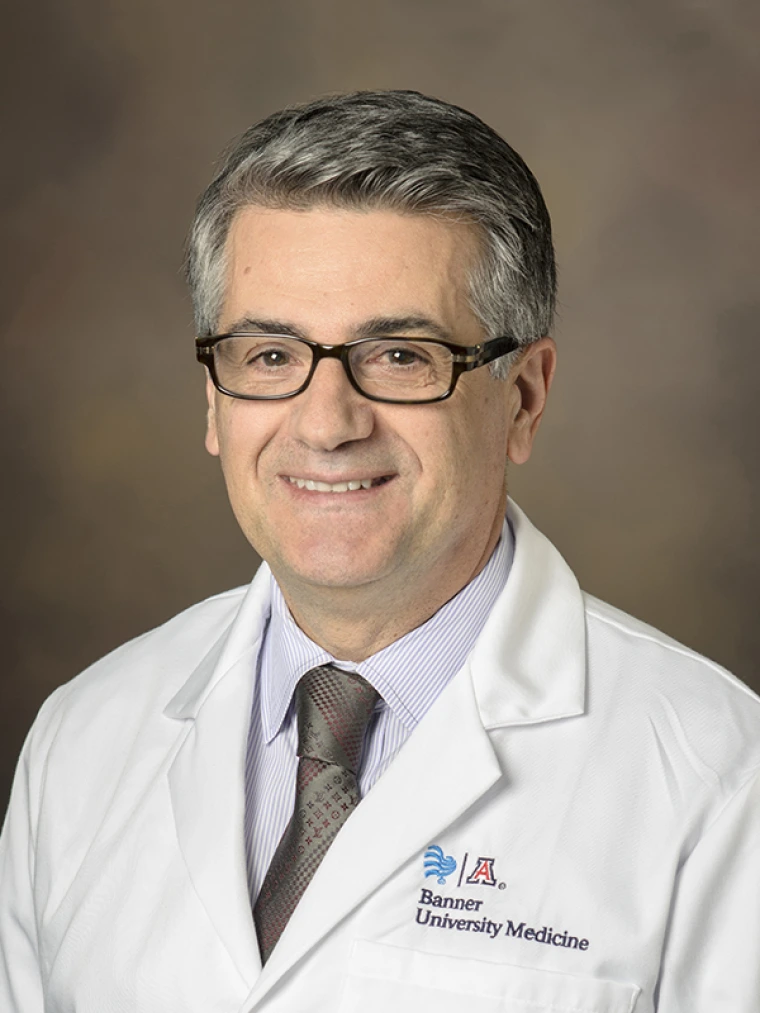Baldassarre Stea, MD, PhD
Born in Italy (Bari), educated at UCLA (BS, PhD in Biochemistry); Medical School at the George Washington University; Internship (Medicine) at GWUMC in Washington DC, Radiation Oncology residency at the National Cancer Institute in Bethesda, MD. Came to the U of A College of Medicine as an assistant professor, rose to the rank of Professor with tenure, now Department Head for the past 16 years
Dr. Stea's basic research interests revolve about the mechanism(s) of radiation resistance and ways to increase radiation sensitivity of resistant tumors. One of his early discoveries was the ability of Iressa (Gefitinib) to increase radiation sensitivity for GBM cell lines (1); this discovery was then translated from bench-to-bedside in an investigator initiated clinical trial to treat brain metastases from NSCLCa with a combination of XRT + Tarceva, a second generation TKI EGFR inhibitor (2). Dr. Stea believed this to be one of his most significant contributions to science simply on the basis of the progressive work from the bench to clinical application. Another major interest has been elucidating the mechanism of action for the radiation resistance exhibited by GBM; he recently published a clinical-pathological evaluation of mRNA expression profiles from GBM patients treated with radiation therapy which discovered differences in survival of GBM patients as a function of their Rad51 expression profile (3). Working in collaboration with a local industry sponsor, we have worked on overcoming the challenge of tumor hypoxia in GBM using an O2-carrying nanoparticle infusion (Nano2) to enrich tumors of Oxygen prior to radiation therapy. This preliminary work showed that tumor hypoxia can be overcome, and a phase 2 randomized clinical trial is currently being conducted in patients with GBM (4).
Cancer Focus
Clinical: I specialize in treatment of pediatric cancer and brain tumors, utilizing different radiation modalities
Research: Clinical trials for malignant and benign brain tumors




